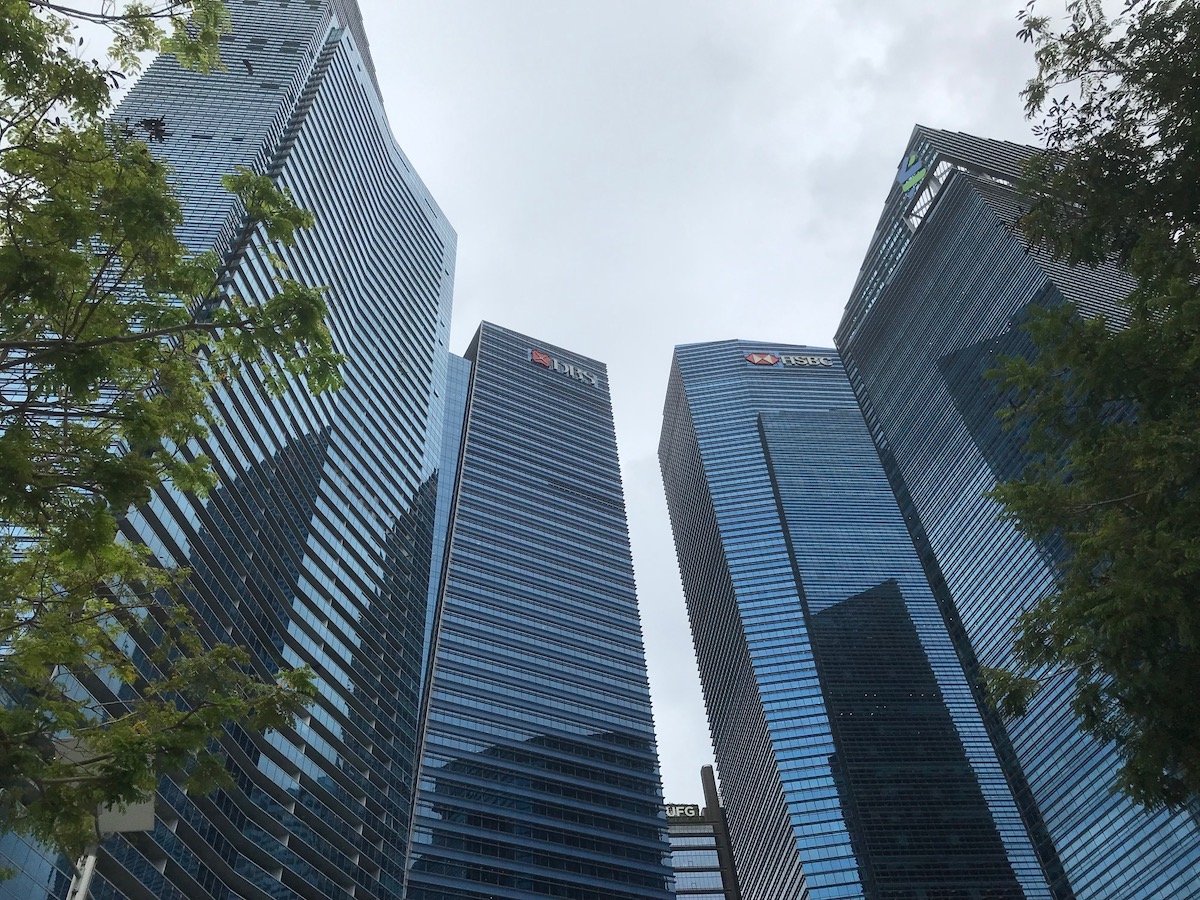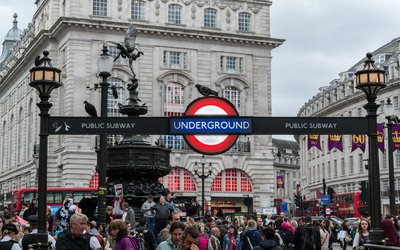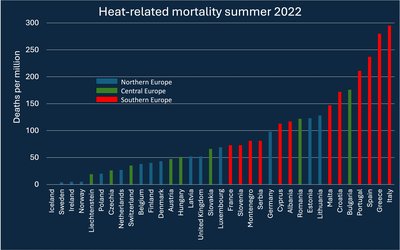70 years from now, nearly half of the urban population could be exposed to high heat stress
May 23, 2023

Cities: hotspots of heat stress
The urban population is particularly vulnerable to heat stress increase under climate change. Urbanized areas are generally warmer than the surrounding rural environment because of the urban heat island effect. However, the rise in maximum air temperatures in urbanized areas says little about changes in heat stress. One must look at the combination of heat and humidity. Recognizing that most people live in urbanized areas and that urbanization of the global population continues, understanding future changes in urban heat exposure is extremely relevant.
Humid heat stress explained
High temperatures and high humidity are a particularly deadly combination. When humidity is low, the body can dissipate its heat through sweat evaporation. The higher the humidity, the more difficult this becomes. The limit of what the human body can withstand in terms of heat stress is reached when evaporation is so limited that the body becomes increasingly hot. On a hot summer day, with an air temperature of say 30 °C, it may not seem that hot when the air is dry and evaporation easily keeps your body cool. When air humidity is much higher, the same air temperature of 30 °C feels much hotter. Humid heat stress is completely different for these two days, although air temperature is the same.
You can see this difference when you cool down a parcel of air of both 30 °C days under the same conditions (a constant pressure). When air cools down it can contain less water vapor. If you cool the air enough, you will eventually reach a point where the humidity is 100%, and at this humidity evaporation has become zero and your body can no longer cool down by sweating. You have to cool the parcel of dry air much more than the parcel of humid air to get to that point. This temperature at 100% humidity is a heat stress indicator that can be used to compare climates at different locations or at different times. This indicator is higher for the humid than for the dry air summer day of 30 °C.
Heat stress will increase sharply
Future changes in humid heat stress in urban areas and in the number of people exposed to it have been assessed for the last decade of the century (2091–2100) compared to the first decade (2000– 2009). This was done for a high-end scenario of climate change that is considered ‘plausible’ by the IPCC.
According to the results of this recent study, this heat stress indicator – the temperature at 100% humidity – will increase substantially across the globe in nearly all urban areas by 3.1 °C by the end of the century under the selected scenario of climate change. This projected increase largely results from climate change-driven increases in humidity and air temperature. The impact of urbanization – through the urban heat island effect – is relatively small.
High stress for nearly half of urban population
The authors of this study focused on future changes in the exposure of urban populations to a value for this heat stress indicator of at least 26 ° C. According to the United States’ National Weather Service’s Heat Index, weather conditions at which the combinations of air temperature and relative humidity yield this heat stress indicator to exceed 26 °C would be classified as ‘Caution’ or ‘Dangerous’.
The results of this study indicate that almost half of the projected urban population in 2100 – over 3 billion people worldwide – may live in urban areas with high humid heat stress, where the heat stress indicator exceeds 26 ° C part of the year. That is more than three times as much as the current situation.
Limit to livability of cities
In nearly all urban areas globally humid heat increases under the selected scenario of climate change. Dangerously exposed urban areas are concentrated in the coastal tropics. The increases are most pronounced for Central America and the Caribbean, Western Africa, Middle East, Southern Asia, and Southeast Asia. In the Middle East region, for instance, total urban population is projected to increase by a factor of 7, whereas the urban population exposed to dangerous humid heat may increase by a factor of 42. According to the authors of this study, ‘this rapid growth in exposure, in the absence of sufficient cooling measures, will severely limit the livability of cities’.
Green infrastructure dilemmas
Planting trees may seem a logical strategy to mitigate the urban heat stress increase. However, things are not that simple. The authors stress the dilemmas linked to investing in green infrastructure as a long-term cooling strategy. When heat stress is high due to high humidity, evaporation by trees will be relatively low and so will be the added value of more trees to cool the air. In regions where heat stress is high due to extremely high air temperatures – at relatively low humidity – evaporation by trees would be high but there is often not enough water to irrigate significantly more trees. Urban greenery is not a ‘one-size-fits-all solution’ to mitigate heat stress.
Source: Yang et al., 2023. Environmental Research Letters 18, 044024.








